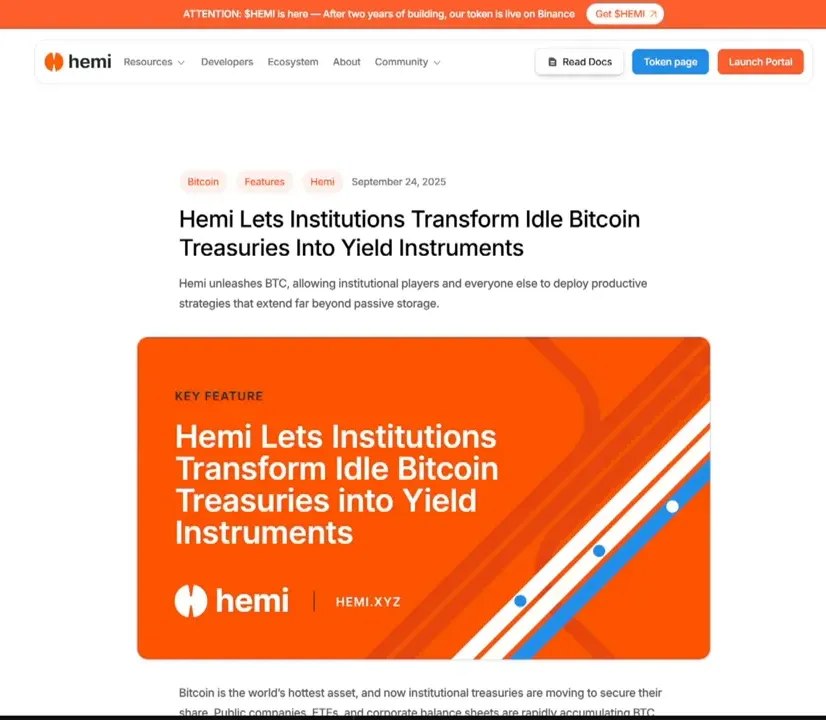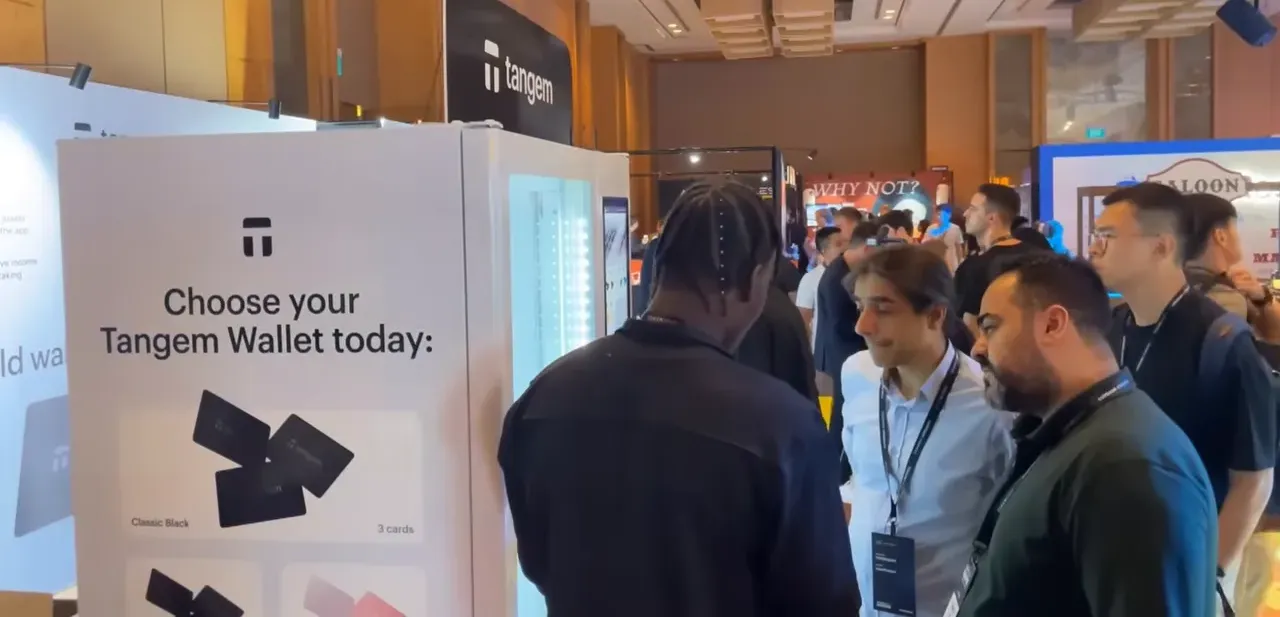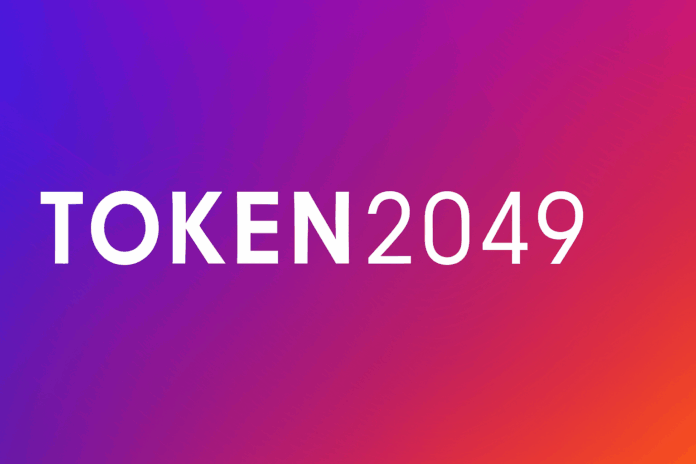I just returned from Token2049 in Singapore and I have to tell you: this was not just another conference — it was a high-powered, full-throttle glimpse into where crypto is headed next. In this article I’ll walk you through the conversations I had on stage and off, the interviews with industry heavyweights, and the narrative threads that tie together what could become the defining cycle of the decade.
I’m writing this as the host who sat down with Paolo Ardoino (Tether), Arthur Hayes, Charles Hoskinson, Joseph Chalom (SharpLink), representatives from Bitwise, Galaxy, and many more. If you follow crypto markets, institutions, or the next phase of adoption, the perspectives below are essential context for positioning yourself.
Token2049 felt like a global market snapshot: lines that wrapped around the venue for hours, five floors of exhibitors, thousands of attendees, and Web2 giants rubbing shoulders with crypto-native builders. From my perspective, the biggest theme was institutionalization plus real utility narratives — stablecoins, DATS (digital asset treasury companies), PerpDEX competition, privacy-enabled trading, and real-world assets (RWAs).
Table of Contents
- Why this Token2049 mattered — the macro backdrop
- Stablecoins: Tether, policy wins, and the practical implications
- DATS: Digital Asset Treasury Companies — disruptor or accelerant?
- PerpDEX wars: commodification, zero fees and the new revenue models
- Privacy is back: on-chain private DEXs and payments
- Interview highlights: what the big names actually said (and why it matters)
- Products and launches that demand attention
- Cycle analysis: is the four-year halving cycle over?
- Actionable positioning ideas (not financial advice)
- Conference floor color: what the vibe told us
- FAQ — What readers asked me after Token2049
- Closing thoughts — trade well, think structurally
- Further reading and resources
- FAQ — quick recap
Why this Token2049 mattered — the macro backdrop
Token2049 was different because the players in the room were broader than ever. Large cloud providers, exchanges, asset managers, and regulators were all present in force. That convergence isn’t accidental: 2025 looks like the year the market shifts from speculative bottoms-up narratives into an age where products, regulatory clarity, and capital flows become the drivers of the next phase.
There were three dominant vectors at the conference:
- Stablecoins and payments infrastructure moving into mainstream policy conversations.
- Institutional instruments and treasury companies (DATS) offering new ways for traditional investors to access crypto assets.
- Derivatives and Perpetual protocols evolving into ecosystems — where fees might trend toward zero and secondary revenue sources become the real value.
Stablecoins: Tether, policy wins, and the practical implications
I sat down with Paolo Ardoino from Tether. The message was clear: stablecoins are now central to how crypto-as-money will interface with the traditional world. Paolo emphasized the real-world challenge Tether addressed — banks failing to serve billions of underbanked people — and why stablecoins remain the pragmatic solution.
“After 11 years that Tether created the stablecoin technology, now in the most important country in the world finally issued a law which we contributed to as Tether and the Genius Act.” — Paolo Ardoino
Why that matters:
- Regulatory recognition gives stablecoins and issuers greater legitimacy and ability to integrate with financial rails.
- Tether will likely remain dominant in crypto markets while competition from bank-backed stablecoins (or other issuers) focuses on distribution and reach.
- Stablecoins are a macro scaling story: Paolo and other panelists forecast supply growth from hundreds of billions to potentially trillions as on-chain value transfers and RWAs expand.
The persistent takeaway: stablecoins aren’t just a niche anymore. They’re a core infrastructure layer. For traders and investors, that means more capital will live on-chain and liquidity profiles will change. If you are thinking about market structure and on-chain operations, stablecoin adoption changes everything — from settlement to institutional custody and treasury operations.
Implication for traders and spot strategies
Spot trading is where many retail and professional participants interact with the market. When stablecoin adoption accelerates, trading becomes faster, on-chain liquidity becomes deeper, and cross-border flows get cheaper and more efficient. For investors looking for curated signals and operational efficiency, a spot trading service can help you capture shorter-term opportunities while staying aligned with macro flows. If your approach includes monitoring stablecoin flows, payment rail news, and RWA tokenization announcements, integrating a signal-driven spot trading solution can help you act quickly without getting bogged down in execution mechanics.
DATS: Digital Asset Treasury Companies — disruptor or accelerant?
DATS were everywhere in the conversations I had. The thesis behind a Digital Asset Treasury Company is simple: provide institutional investors equity-like exposure to crypto assets while offering active treasury management, yield capture, and balance-sheet-driven instruments. Joseph Chalom (ex-BlackRock) explained why a treasury company model addresses institutional constraints — daily liquidity needs, yield capture, and lack of infrastructure for true productive ownership of ETH.
Key points from the DATS discussion:
- DATS provide an equity-format exposure, which some institutions prefer while they navigate procedural, regulatory, or custody constraints.
- ETH is a productive asset; it can generate yield (staking, liquid restaking, DeFi activity); DATS can use booms in volatility to structure converts, unsecured bonds, or other instruments that allow efficient capital deployment without staking custody exposure.
- DATS can act as “power users” of ecosystems: they can deploy capital into DeFi, tokenized RWAs, and cross-chain products, accelerating real adoption on specific L1s.
In short: DATS are not just another fund wrapper. They could be a key institutional on-ramp that increases productive demand for assets like ETH, SOL, and more — which in turn reshapes flows, liquidity, and valuations.
PerpDEX wars: commodification, zero fees and the new revenue models

One of the recurring narratives: Perp DEXs (perpetual derivatives on-chain) are entering a commodification phase where competitive dynamics push fees toward zero. Arthur Hayes called this the “Chinafication of Perps” — meaning competitors will try zero-fee models, token incentives, and aggressive tokenomics to capture volume.
“Trading perps is going to be almost free for just about everyone, going from now until the future.” — Arthur Hayes
That sounds alarming for exchange revenues — and it should be. But here’s the nuance: when core fees compress, platforms will pivot to complementary revenue and value capture models — think vaults, lending, spot, liquidity services, options, and tokenized secondary products. Cindy Leow from Drift made this clear: Drift is not just a perps exchange, it’s a broader liquidity and borrowing ecosystem — vaults, yield products, spot and margin trading all feeding into the same flywheel.
- Perps fee compression means valuations of pure fee-capture exchanges may be under pressure.
- But those that build full ecosystems (vaults, lending, non-fee revenue, on-chain services, token buybacks) can maintain meaningful intrinsic value.
For traders: expect a more competitive cost structure and better product bundling, but also higher complexity as protocols cross-subsidize features.
Where the alpha moves when perps go zero-fee
Alpha shifts from fee extraction to:
- Token emission and buyback mechanics (protocol-controlled economics).
- Secondary financial engineering: structured products, yield vaults, insurance, and credit services.
- Community-owned revenue flows (DAO treasury distributions, revenue sharing models).
If you trade perps, focus on product robustness (margin, slippage, liquidation mechanics) and incentives alignment. If you invest in tokens, watch for sustainable buyback or revenue-share models — those will drive long-term value capture.
Privacy is back: on-chain private DEXs and payments
Privacy tech made a major showing. We spoke with Shachaf from Codi about Previx (a privacy-enabled DEX) and the underlying tech is worth paying attention to: garbage circuits that allow multi-party encrypted computation on-chain. That unlocks a key capability: private order books, private bids, private execution — meaning front-running and predatory MEV attacks become much harder.
Why privacy DEXs matter now:
- ZK and related privacy tech are maturing; but many privacy approaches are single-party or off-chain dependent. Previx claims on-chain multi-party privacy that supports AMM and on-chain perps functionality.
- Private payments and private tokens become real use cases for institutions that require confidentiality and compliance privacy layers for RWA transactions.
- Privacy plus AI-driven agents for execution opens up new UX and trading products (e.g., private AI agents that trade for you within a privacy layer).
One practical implication: if privacy-enabled public blockchains scale securely, we could see a whole class of tokenized RWA and institutional settlements that today prefer closed systems — move onto decentralized rails with privacy protections — and that will further accelerate on-chain adoption.
Interview highlights: what the big names actually said (and why it matters)
Below I summarize the most important interviews and what each one means for the cycle, price action, and product evolution.
Arthur Hayes — mega bullish on macro liquidity
Arthur was blunt: liquidity is still the central narrative. As long as global political and monetary action points toward continued money printing (or at least slower tightening), real assets — which includes Bitcoin — remain a hedge for capital preservation.
“If you think the forward curve on the growth of money supply is going to flip lower, cool — that’s the end of the cycle. If you don’t, the cycle will last as long as it lasts.” — Arthur Hayes
Key translation: cycles are liquidity-driven. The halving rhythm is one input; monetary policy is the other. If central banks or governments continue to inject liquidity (or prevent austerity), there is fundamental support for risk assets and on-chain money flows.
Paolo Ardoino (Tether) — stablecoins win the rails war
Paolo highlighted that a large portion of the global population is underbanked; stablecoins solve cross-border friction and provide a scalable rail for settlements. His stance: Tether has product-market fit and is positioned to remain the leading stablecoin in crypto, particularly in markets where banks fail to serve users.
Joseph Chalom (SharpLink) — DATS as institutional on-ramps
Joseph explained why treasury companies can be crucial: they create equity-like access to ETH and other productive assets, and they can use financial engineering — converts, unsecured bonds, or yield monetization — to provide institutional-grade exposures without forcing institutions to self-custody or stake themselves.
This creates an important interplay between ETFs, DATS, and direct crypto holdings. Each product type addresses different constraints and regulatory comfort levels.
Hunter Horsley (Bitwise) — ETFs + ETP filings and institutional demand

Bitwise’s inflows tell a clear story: institutional demand is real and growing rapidly. Hunter shared that AUM has grown substantially year-over-year, reflecting the maturing institution appetite for crypto exposure via regulated products. Bitwise has filings for a wide array of tokens — Solana, XRP, Avalanche, Doge, Chainlink, Near, Aptos — which indicates TradFi expects demand for diversified token exposure beyond just BTC and ETH.
Alex Thorn (Galaxy) — dual crypto+AI focus, tokenized securities stance
Galaxy’s message: regulation and tokenization will push a lot of activity on chains like Ethereum and Solana. They emphasize building compliant tokenized securities with the same legal and economic rights as public securities, not just wrappers. Their move from mining to AI compute is also significant — it shows how crypto companies are evolving into hybrid infrastructure firms serving multiple growth vectors.
Charles Hoskinson (Cardano) — burying the hatchet and a product push

Charles and I had a candid talk. He confirmed Cardano’s missteps on DeFi earlier in the cycle and explained the plan to catch up: Midnight (a privacy and data storage stack), stronger integrations (Brave, Blockchain.com), Bitcoin DeFi compatibility (UTXO and cross-compatibility), scaling primitives like Hydro Doom, and an active treasury now backed by governance with a large budget to fund growth.
Key points:
- Cardano’s community and governance remain assets; treasury funding gives the ecosystem strategic firepower.
- Cardano aims to pivot into areas that capture the next wave: Bitcoin DeFi, XRP DeFi, and RWA tokenization.
- Scalability work is non-trivial — reaching 1M TPS in testing is one thing; productizing it is another.
Products and launches that demand attention
The floor was a living product lab. Here are the must-watch projects and why they matter.
ZK-Sync — elastic integrations and RWA momentum
ZK-Sync announced the elastic network additions (Sandbox and ADI chains). Their emphasis on privacy and RWA adoption deserves attention because they already lead RWA totals after Ethereum, claiming billions in RWA tokenization. For companies that need privacy-compliant settlement layers, ZK-Sync’s architecture provides a clear enterprise on-ramp.
Hemi — Bitcoin L2 with yield narratives

Jeff Garzik explained Hemi as a bridge between Bitcoin security and EVM programmability. The pitch is simple: institutions will want yield on Bitcoin if they allocate at scale. Hemi proposes an L2 with “proof-of-proof” security anchored to Bitcoin and an Hemi Virtual Machine (HVM) that embeds Bitcoin node functionality inside contracts. If institutional adoption of Bitcoin keeps rising, a credible Bitcoin L2 that safely delivers yield could attract massive flows.
Drift — full-stack on-chain ecosystem
Drift is positioning to win by being more than a perps desk: vaults, lending, spot, margin, and borrowing all feed a unified product. That diversification matters if perps fees compress. Drift’s argument is that revenue will come from the ecosystem, not just perps fees. The team also highlighted on-chain upgrades (expectation for an upgrade in November) that could materially increase capacity and capture.
Previx (on Codi) — private on-chain trading
Previx aims to be the first privacy-native on-chain DEX that supports AMM, perps, and private tokens. Private token issuance and private payments are the killer apps here: if institutions can transact and settle tokenized securities privately on-chain, we might see entire markets migrate from off-chain settlement layers into on-chain private rails.
Tangem — cold-wallet UX and the vending machine

Hardware wallets are still essential. Tangem’s vending approach (card-like cold wallets) removes the need for seed phrase storage and reduces human error. Practical security innovations like Tangem make onboarding easier for non-technical users and institutional staff who need secure but simple custody solutions.
Cycle analysis: is the four-year halving cycle over?
One of the most provocative debates at Token2049: does the four-year halving-driven cycle continue, or is the market evolving into a new regime? The short answer: both narratives can be true depending on which inputs you prioritize.
Key dimensions to consider:
- Monetary policy and liquidity. If global monetary authorities continue to inject liquidity (or use fiscal policy expansion), risk assets, including crypto, get tailwinds.
- Institutional adoption. ETFs, DATS, tokenized securities, and custody solutions expand the buyer base and possible price support.
- Retail cycles and blow-off tops. The classic “blow-off top driven by new retail” might be less pronounced if this cycle is led by institutions and treasury flows rather than viral retail mania.
- Technological and product cycles. Privacy, Bitcoin L2s, and stablecoin rails could create new pockets of demand not strictly tied to halving rhythms.
Arthur’s position is straightforward: if money printing continues, the cycle extends. If liquidity tightens dramatically, then the cycle ends. Most industry leaders at Token2049 expect more liquidity or at least continued accommodative policy dynamics in multiple jurisdictions — and that’s the core reason many were bullish.
My synthesis
I don’t believe the cycle ends imminently. Market structure has changed: more institutional buyers, more product layers to absorb inflows, and evolving revenue models for protocols. However, that doesn’t mean volatility disappears. The path forward is likely choppier and more complex: fewer dramatic blow-off tops but longer multi-year appreciation driven by institutional demand, RWA tokenization, and utility expansion.
Actionable positioning ideas (not financial advice)
When you combine the narratives from Token2049, the following positioning ideas make sense for traders and long-term allocators:
- Stablecoin exposure and monitoring: Track USDT and Circle flows; stablecoin supply growth is a precursor to liquidity entering the crypto native economy.
- DATS and equity vehicles: For institutions or accredited investors, equity or convertible exposures to DATS can offer a hybrid play on crypto upside and structured yield capture.
- Perps and derivatives: Expect tight spreads and falling fees. Trade on execution quality and liquidation robustness; focus on platforms that are diversifying revenue sources.
- Privacy-enabled infrastructure: Consider exposure to projects that provide compliance-friendly privacy (ZK-Sync privacy features, Previx), especially if you trade sensitive flows or engage with RWAs.
- Bitcoin yield pathways (Bitcoin L2s): Prepare for narrative lifts when institutional demand for yield on BTC increases — Hemi and similar L2s could be the first beneficiaries.
- Hardware wallets and custody UX: If you run hot and cold wallets for ops, look at Tangem-like solutions to reduce human error and simplify onboarding.
Where a spot trading service can help: if you are actively monitoring these multi-narrative flows (stablecoin supply, RWA tokenization news, DATS press, perps fee changes), a signal-driven spot trading service can give you real-time trade setups aligned with the macro moves. Crypto spot trading signals can be a practical complement for people who want curated signals tied to on-chain and institutional flows without spending hours parsing every release.
Conference floor color: what the vibe told us
The Token2049 floor was more than panels — it was a real-time product showcase and mood gauge. From the DJ tents to the zip line and cryo chambers, the event had culture and capital colliding. But the point wasn’t spectacle — it was that the people who build product (developers, founders) and capital (institutions, exchanges) were in the same rooms, trading ideas and deals.

Small interactions mattered: an escalator chat with Tom Lee, a hallway catch-up with Arthur Hayes, an impromptu sit-down with Charles — those micro-conversations helped me triangulate consensus. And consensus at Token2049 was that we’re still in the early innings of adoption despite the scale of money now participating.
FAQ — What readers asked me after Token2049
Q: Is the bull market already here or coming?
Answer: The bull narrative is alive, especially driven by institutional flows and product launches. Whether price follows immediately depends on macro liquidity. Many insiders are bullish on the medium term because stablecoins, DATS, ETF filings, and RWA tokenization are actively increasing the potential buyer base.
Q: Will perps fees go to zero and who wins?
Answer: Fee compression is likely for pure perps products. Winners will be platforms that diversify revenue (vaults, lending, tokenomics designed for buybacks, treasury streams). Drift is a strong example of a protocol built to survive zero-fee perps by owning complementary revenue and deeper product integration.
Q: What role will DATS play in institutional adoption?
Answer: DATS provide an equity-format, regulated-ish vehicle to access crypto exposures, and they can act as power users in ecosystems. They’ll be complementary to ETFs and direct custody by institutional players. If DATS can deliver steady yield and productized exposures, they’ll be a major driver of inflows.
Q: How big is the stablecoin narrative — really?
Answer: Massive. If stablecoins scale to trillions for settlement, the amount of liquidity transacting on-chain will grow accordingly. That supports deeper on-chain order books, faster settlement for RWAs, and better capital efficiency. Tether remains a huge factor in this evolution.
Q: What does privacy on-chain mean for traders and institutions?
Answer: Privacy opens up on-chain options for institutions who need confidentiality. It reduces MEV risk for traders, unlocks private tokenized RWA settlement, and enables trading strategies that are impractical on public transparent rails. Projects like Previx and privacy-enabled chains that support multi-party computation could catalyze adoption among institutional users.
Q: Should I be worried about regulatory crackdowns killing the market?
Answer: Regulation is a risk, but the narrative at Token2049 suggested that increased regulatory clarity can be a net positive — it brings institutions in. The key is whether regulation is predictable and allows compliant on-chain tokenization (as opposed to blanket bans). Many firms are building with compliance in mind.
Q: Where should I allocate if I expect longer-term institutional flows?
Answer: Consider a blend: core BTC and ETH allocations for long-term exposure, selective allocations to infrastructure plays (privacy, Bitcoin L2s), and tactical positions in perps/DEXs that have sustainable revenue models. If you’re active, spot strategies aligned with stablecoin flow indicators and RWA announcements can be profitable; a curated spot signal service helps with timing and execution.
Closing thoughts — trade well, think structurally
Token2049 told a clear story: we’re moving from a speculative retail-era playbook into an era of product-driven growth, institutional formats, and real rails for value. That doesn’t mean the market becomes boring — it becomes deeper, more interconnected, and more complex.
If you want a concise takeaway:
- Stablecoins are the rails — monitor supply and policy developments.
- DATS and regulated products will change buyer composition — equity-style vehicles matter.
- Perps commodification forces platforms to innovate beyond fee capture.
- Privacy and Bitcoin L2s are structural innovations that could unlock fresh institutional flows.
Where I land personally: I don’t feel the cycle ends anytime soon. Liquidity dynamics, regulatory clarity in major jurisdictions, and new institutional products point to more on-chain adoption and capital flow. That said, risk management is vital — volatility hasn’t gone anywhere and product risk (technical and regulatory) remains real.
For traders who want a practical execution partner, integrating signal-driven spot execution with a disciplined risk framework can help capture opportunities from these new narratives. Crypto Spot Trading is designed to deliver curated, time-sensitive spot signals that align with these macro and on-chain flows — a practical complement if you want to act on Token2049–driven insights without missing execution windows.
Token2049 felt like a checkpoint for the industry. We saw scale, ambition, and a new set of institutional plays beginning to accelerate. If you’re a trader or investor, the next 12–24 months will reward structural thinking more than hype-driven bets. Trade well, and always manage your risk.
Further reading and resources
- Follow on-chain stablecoin supply metrics and treasury flows
- Monitor ETF filings and DATS announcements for institutional demand cues
- Watch product upgrades for perps and L2 scaling launches
- Track privacy chain mainnets and privacy DEX launches for trading environment changes
FAQ — quick recap
Q: Is Token2049 a good bellwether for market direction?
A: Yes — it aggregates product announcements, institutional sentiment, and developer roadmaps. But use it alongside macro and liquidity data.
Q: Will stablecoins overtake fiat rails?
A: Not overnight. But expect they will become a primary settlement rail for on-chain activity and cross-border flows, especially in underbanked markets.
Q: Are perps dead as a business model?
A: Not dead, but commodified. Pure fee-based perps will be under margin pressure. Platform value lies in complementary products and tokenomics that produce durable revenue.
Q: How should a retail trader respond?
A: Learn product mechanics, trade on platforms with robust risk controls, and consider signal-driven spot strategies to capture informed market flows rather than chasing headlines.
Q: Final take — are you bullish?
A: Yes, mega bullish on adoption and structural growth. But cautious on execution and risk management. Trade well.



